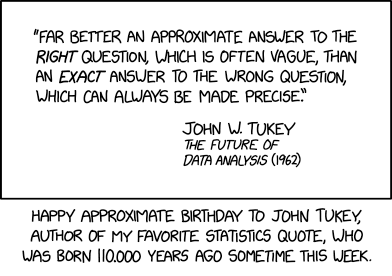Marriage Resistance is the First Clue
In reading current sapphic historical romance, a common motif is for the central characters to provide an early clue to their sexuality by resisting or rejecting the idea of marriage to a man. (Goodness knows, I've used that motif myself in Daughter of Mystery!) But is that historically accurate? No one generalization will hold for all times and places, but when examining the lives of Charity and Sylvia and the several other women that Charity had relationshps with, a common thread is an active disinterest in marriage, to the point where people who knew them had concluded that they'd end up "spinsters" entirely separate from any awareness of their romantic interest in women.
Now one might point out that, in a society with compulsory heterosexuality, a woman who is open to the idea of relationships with men is likely to go ahead and get married, even if she also has desires for women. And there are always women who resist heterosexual marriage for philosophical or health reasons. So a strict one-to-one connection between marriage resistance and sapphic desire isn't accurate. And I sometimes think the motif gets overused in fiction. But it isn't exactly wrong.
When I glanced at the calendar the other day and realized OMG I need a podcast topic for this Saturday, it was easy to decide that I'd write up a mini-bio of Charity and Sylvia this month. Usually, even when my essay research focuses around a specific publication or researcher, I have multiple sources to use, but this isn't the case for C&S. Pretty much there's just Cleves' book, so I'll introduce the topic with a lot more emphasis that I'm basically just doing a book report.
Cleves, Rachel Hope. 2014. Charity & Sylvia: A Same-Sex Marriage in Early America. Oxford University Press, Oxford. ISBN 978-0-19-933542-8
Chapter 5 & 6
Chapter 5: So Many Friends 1799
Teaching brought Charity into contact with many like-minded young women. “Like-minded” included some women who were specifically attracted to teaching because they had little interest in marriage and whose primary romantic interests were with other women. In addition to their intellectual connections, it was normal for women friends to shar a bed and to openly record their enjoyment of embraces and kisses. Such women also recorded dreams of setting up housekeeping with an intimate friend. More rarely, private writings survive that describe genital sex and orgasm. Intimate friendships had a wide range of expressions and cannot be generalized.
Passionate friendships between single female teachers were unremarkable. Charity’s sister used the potential for one such relationship with a friend of hers to encourage Charity to join her household. Surviving documents trace a series of attachments for Charity. Their correspondence and poems express a strong physicality—wishes to embrace, to share a bed, expressions of longing and physical excitement. The peripatetic lives of teachers also meant these relationships were disrupted by separations and jealousies, again expressed in letters.
Social concerns about such relationships were not typically associated with their sexual potential, as sex and romance were not automatically considered to be linked. But if intimate same-sex friendships appeared to interfere with marriage prospects, it could be a source of concern.
In Charity’s case, concern seemed to revolve around a certain behavioral masculinity in her interactions with other women, combined with a stated disinterest in marriage. But the particulars of what generated gossip about her are difficult to identify due to the vague language used to describe the situation. Charity recorded suffering from malicious gossip, but did not give specifics. Talk was sufficient in some cases to induce Charity to move to a different community.
In some cases, initial friendships were ruptured when Charity initiated something more like courtship when the degree of feeling was not reciprocated. Eventually, only one of her previous intimates remained in correspondence with her.
Chapter 6: Discontent and Indifferent 1800
Sylvia pursued education past what was typical for a woman—or even a man—in her economic situation. Her location in rural Vermont meant reduced opportunities for advanced schooling, though she followed with interest news of academies for girls opening elsewhere. Despite some recovery in finances when the family moved to Vermont, there was no money to send Sylvia away to school.
Sylvia’s family approved of her ambitions, despite not always understanding them and not being able to do more to support them. Schooling provided a reason for Sylvia’s indifference to marriage, which her family commented on. She sought out female friends, but the pickings among unmarried women were few and not sustainable. Her family sometimes warned her against the dangers of “unsuitable” friendships. This may have come, in part, from her sister Polly, who was acquainted with Charity back in Massachusetts and may have had her in mind as a cautionary tale.
By 1804, when Sylvia was 20, comments in correspondence suggested that the family was accepting that Sylvia’s single state might be permanent, and she was urged to look forward to being a companion to her aging mother. Unlike Charity, Sylvia’s disinterest in marriage didn’t extend to refusing to learn domestic skills.








 ︎
︎
 If you’ve been reading my posts for a bit, you may remember me doing a piece or two over my favorite restaurant, Salar. The posts I’ve done have been featuring their wonderful monthly wine dinners they host, but today I’m here to talk about one of their other monthly events I enjoy: Salar’s Mixology Monday!
If you’ve been reading my posts for a bit, you may remember me doing a piece or two over my favorite restaurant, Salar. The posts I’ve done have been featuring their wonderful monthly wine dinners they host, but today I’m here to talk about one of their other monthly events I enjoy: Salar’s Mixology Monday!









